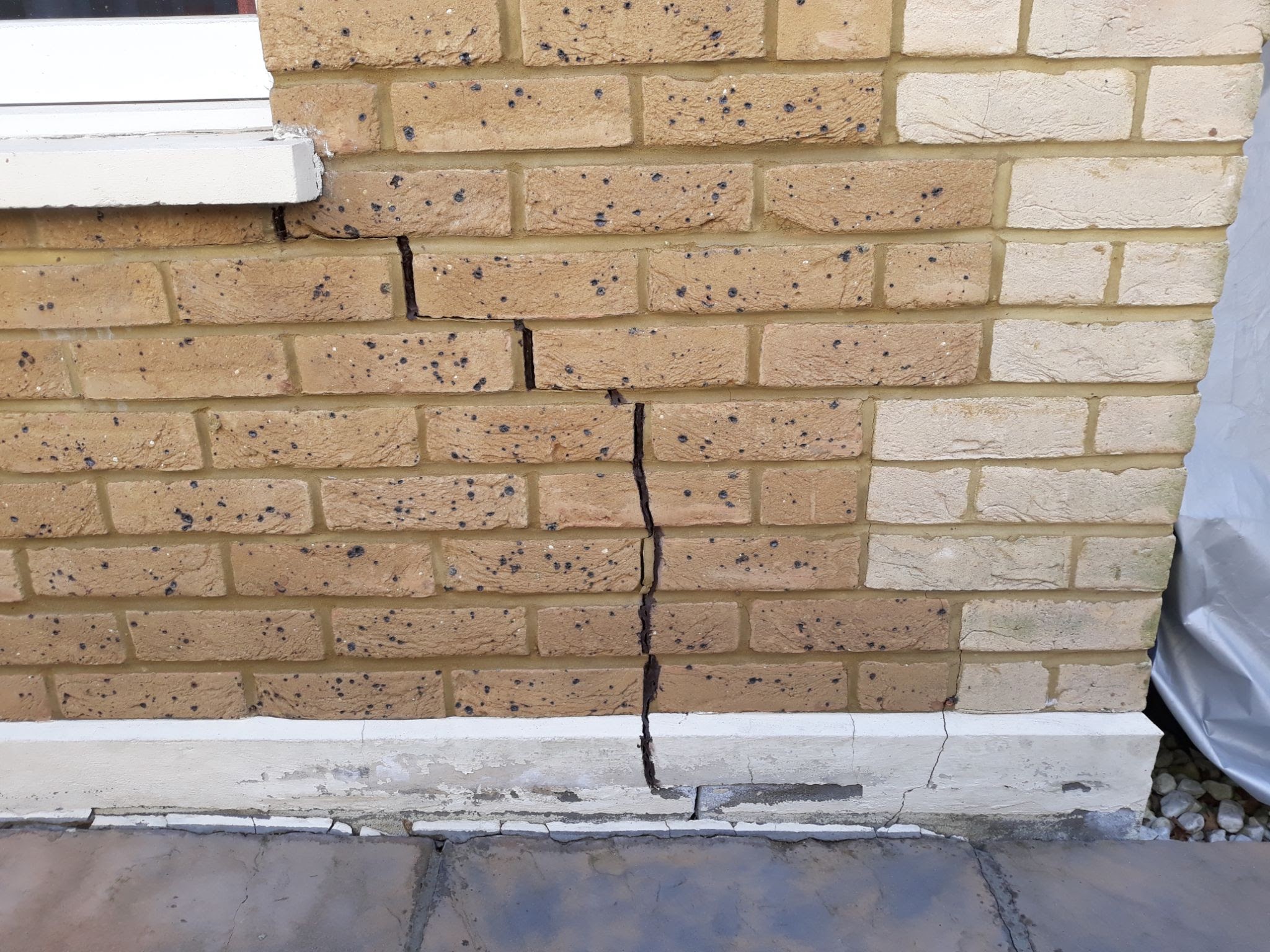
For many homeowners, seeing a crack in the foundations or the wall of their home is amongst their worst fears.
While a crack or structural deficiency in your home isn’t always something to worry about, the cause of it needs to be identified to rule out the worst-case scenario.
Subsidence is just one of the possible culprits, but what is it and what should you be doing about it?
According to research carried out by LV=GI, 4.4 million homeowners understandably don’
As a subsidence expert with more than 25 years of experience, I have put together an ultimate homeowners' guide to subsidence: what causes it and what to do about it.
Subsidence is when foundations of a property sink (or 'subside') into the soil beneath, resulting in damage to the property above ground. If left untreated in its early stages, damage can escalate and it can leave a huge hole in the pockets of homeowners.
But there isn’t any need to panic just yet.
It’s actually normal for some new-build properties to sink into the soil slightly. This is known as 'settlement'. This is different to subsidence however, as settlement occurs when the weight of a new house settles into the soil. This may result in some very small cracking within your home but this will stop and shouldn’t be a long-term issue. This minor cosmetic damage is usually picked up by the housebuilders.
Subsidence, on the other hand, requires immediate action to limit the cost and the damage it can do to your property. It usually occurs where there's an external factor that makes the foundations go downwards and as a result, causes damage to your property.
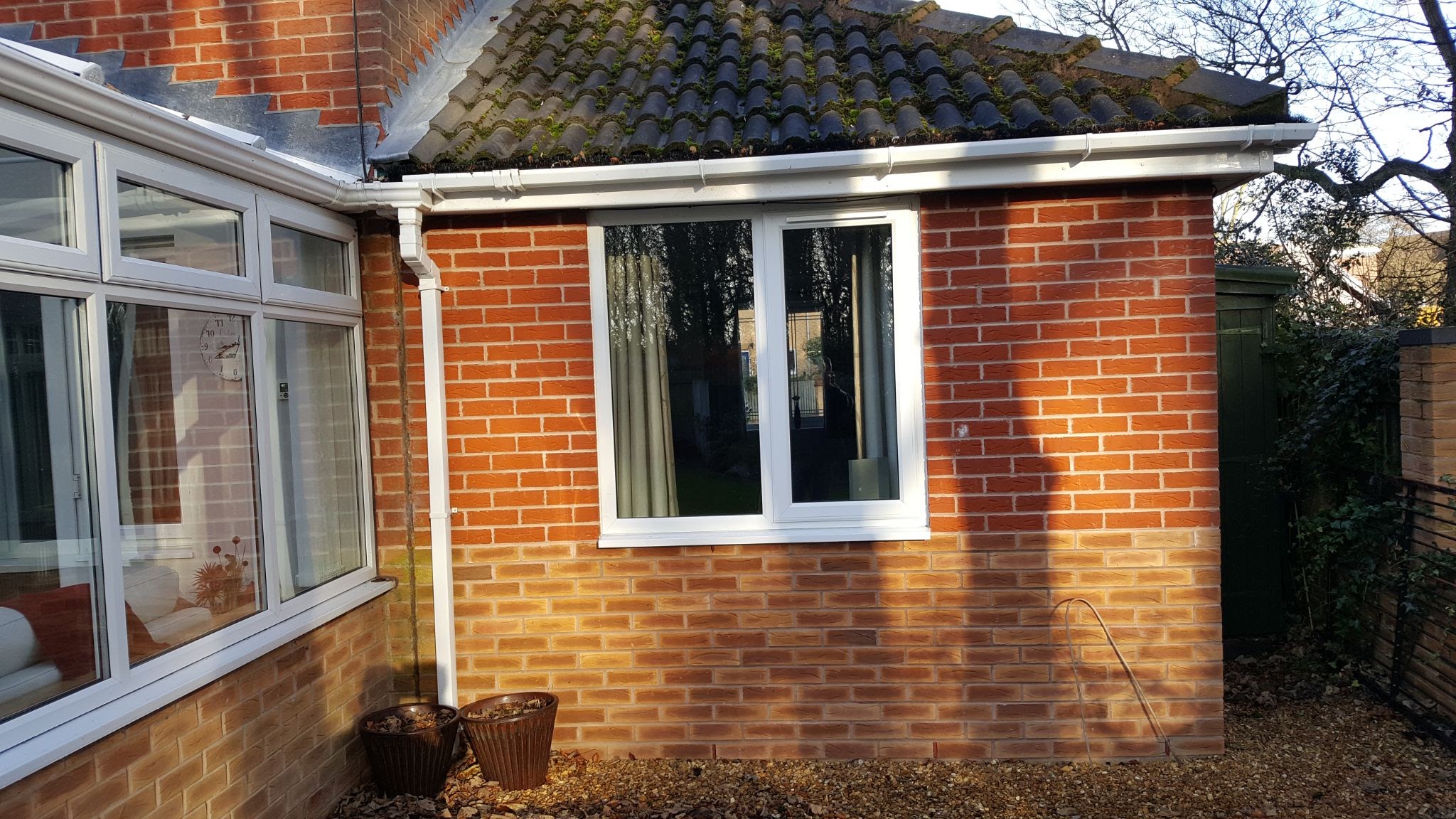
Property seen to be sinking into the ground
due to subsidence
There are a few common external factors that can cause subsidence.
Perhaps the most common cause in the UK is 'clay shrinkage'. An estimated 70% of all subsidence problems in the UK relate to clay shrinkage, usually exacerbated by nearby trees.
Many houses in the UK are built off what is known as shrinkable clay soil. This means that the weather and surrounding trees can have an enormous impact on its behaviour.
During very dry and hot spells, moisture is reduced and the clay soil shrinks up like a sponge which causes fissures and cracks to appear. As a result, the weight of the property can cause the foundations to move downwards into the weakened soil. This downward movement can lead to cracks appearing in the property above.
This problem is particularly prevalent in areas where the roots of nearby trees suck up moisture from the soil, and due to the high temperatures and sustained absence of rainfall, the moisture is not adequately replenished. This is why cases of subsidence are far greater during long, hot summers.
During the wetter months with increased rainfall, the clay soil will begin to expand back to its former condition. However, this seasonal shrinking and swelling process under the foundations of the property can become a constant strain, and damage to your property could get worse, year on year.
Common solutions for these subsidence problems are removal or managing the height of nearby trees, and allowing the soil to rehydrate over a long period. However, subject to the soil conditions some stabilising of the foundations in that area may also be required. Thereafter, when stability has returned, structural crack repairs and redecorations can be carried out.
The second most common cause of subsidence occurs in granular or non-cohesive soils.
Non-cohesive soils, like sand and gravel, are not susceptible to shrink or swell, but they are vulnerable to being washed away by excessive and sustained water flow, such as a leak from a damaged water pipe or underground drainage run.
Should parts of the soil beneath your property be washed away through a leak or damaged pipe, nearby foundations can subside into the weakened soil, creating damage to the property above.
To solve these problems, repairing leaking water pipes or drainage runs will be required. Depending on the soil conditions, some stabilising of the foundations in that area may also be required. Thereafter, when stability has returned, structural crack repairs and redecorations can be carried out.
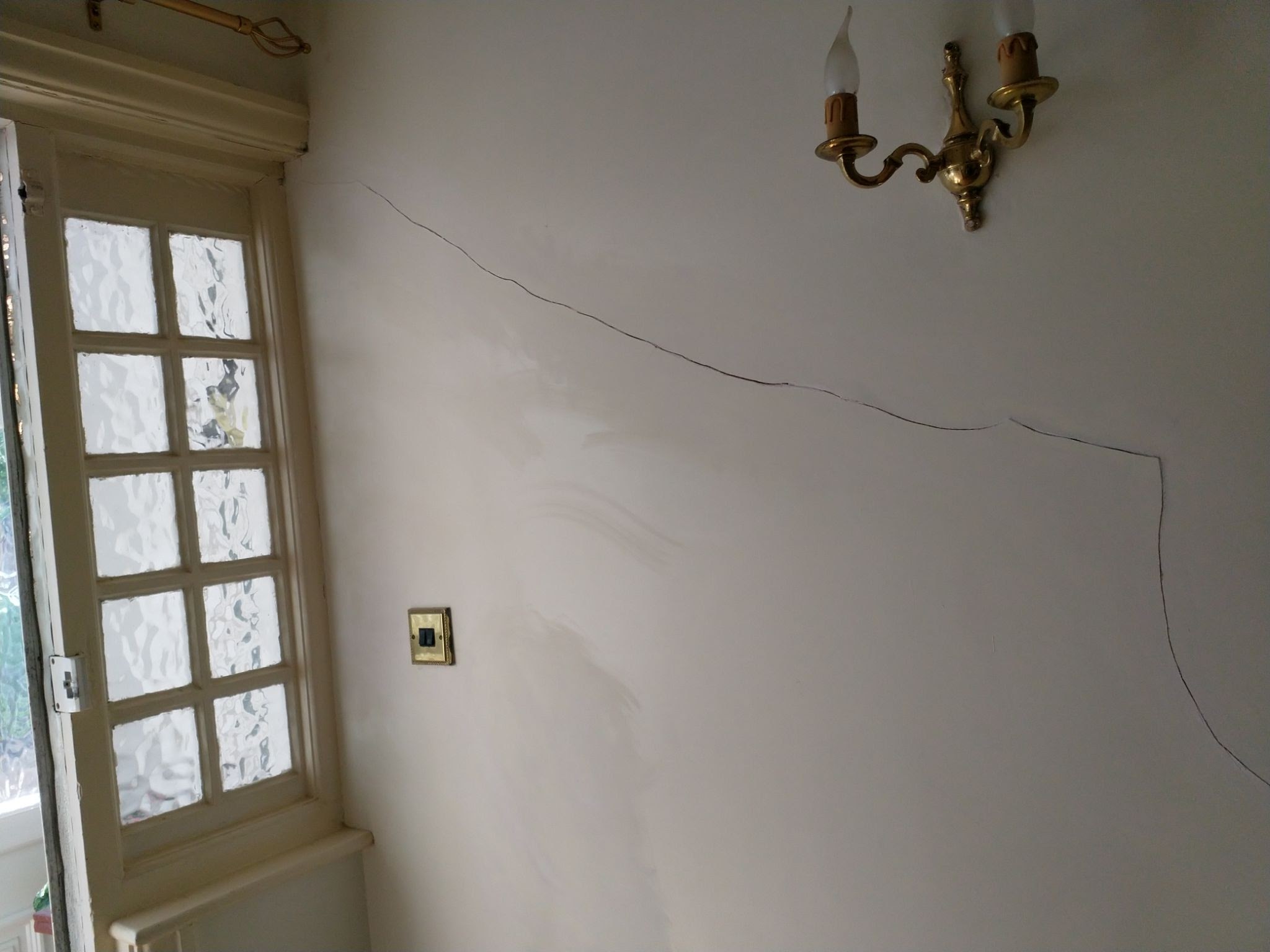
There are many warning signs for subsidence in your property and they can be easily spotted if you know what you are looking for:
Cracks in walls - While not all cracks in a property will be a result of subsidence, it is important to be vigilant. Cracks caused by subsidence are normally diagonal. They are often found around doors and windows and will suddenly appear in plasterwork inside the building, and on the brickwork outside. Cracks usually emanate from ground level.
Sinking floors - This can be easily spotted. Inspect your skirting boards around the floor and if you find new gaps, or cracks further investigation may be required.
Windows and doors sticking - Even windows and doors can be affected by subsidence. If you are having difficulty opening and closing your windows and doors then this could be a result of the foundations of the property having moved.
Extensions/projections moving away from the property - Subsidence cracks are common at points where an extension or projection meets the main building, indicating that the extension is pulling away from the main structure and that an intervention may be required.
One of the biggest misconceptions of subsidence damage is ‘it’ll be alright, I’ll keep an eye on it’.
Subsidence damage will almost always get worse so the last thing you should do is let an issue fester. With underpinning alone ranging from anywhere between £10,000 - £100,000, not dealing with the issue as it arises could accrue enormous costs.
The second biggest myth surrounding subsidence is ‘I can’t sell my house if it’s previously had a subsidence issue’.
This really is not the case.
While subsidence may devalue a property if left untreated, a property that has undergone the appropriate subsidence repairs is still a viable property to put on the market.
I understand some people may be hesitant to buy a property that has been repaired for subsidence but to me, that’s not a good reason to avoid buying a property.
While it may have had some damage in the past, if done correctly, the issue has been dealt with and the property fully restored to its former glory.
My first piece of advice for any homeowner is if they suspect their home has a subsidence issue, contact your buildings insurance provider. They will employ specialists to assist with a thorough investigation into the cause.
When you see a new crack or something that concerns you, don't consider leaving it and keeping an eye on it over the next 12 months, because it will usually just get worse.
Contact your insurance provider as soon as possible to get started with the process.
At this stage, insurance providers will usually get in touch with a specialist loss adjuster who will be involved in the inspection of the property and investigate the cause of the damage. After that, if subsidence has occurred, the experts can move in and deal with the issue.
For those who don’t want to go through their insurance company, reach out directly to the experts. This is actually very common as 40% of our business alone comes directly from homeowners who may not be insured or don’t want to go through the insurance process to deal with the problem, and that’s okay.
Regardless of which avenue you decide to take, the key thing with subsidence is about getting onto the issue early to address the cause and limit the damage done to your property and your pocket!
|
How to choose the right finance |
||
 |
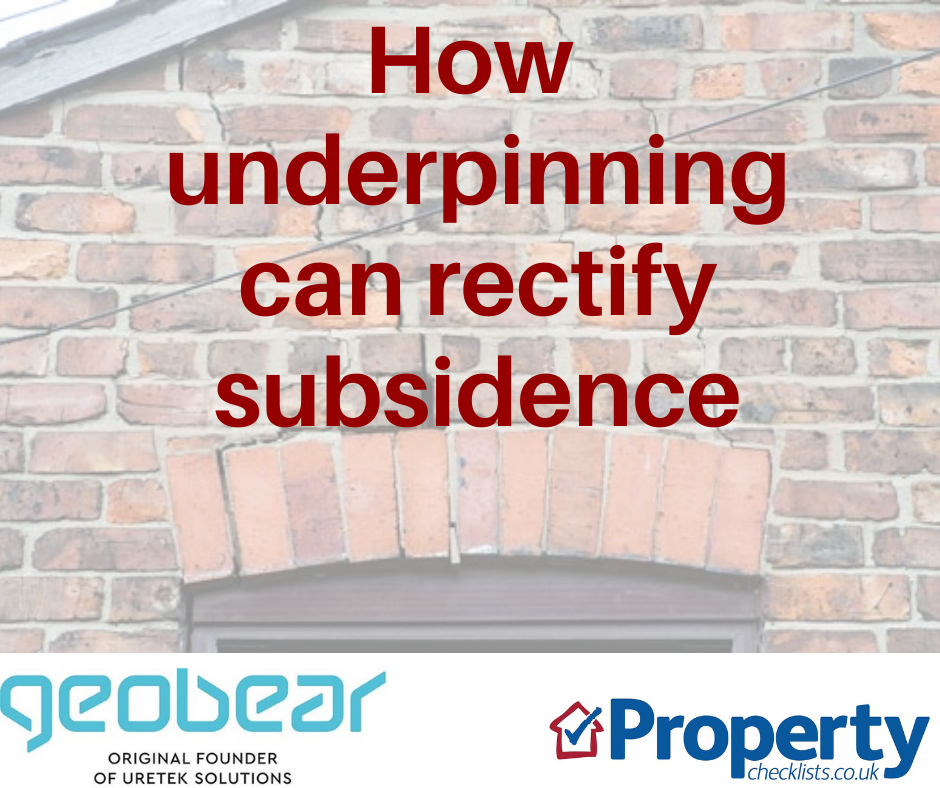 |
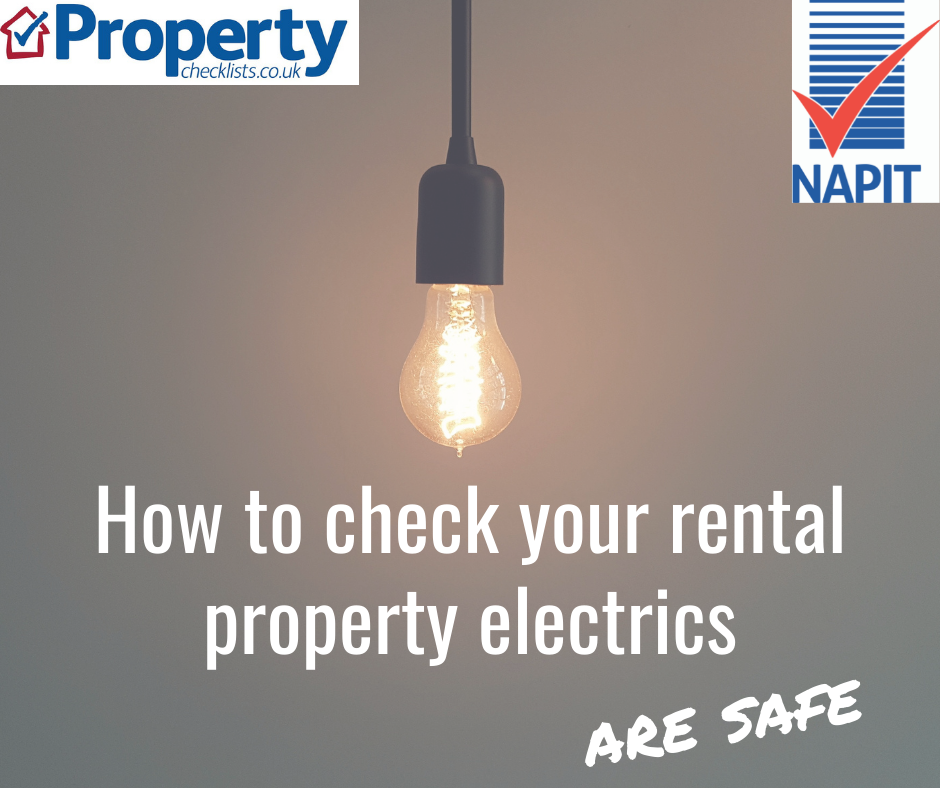 |